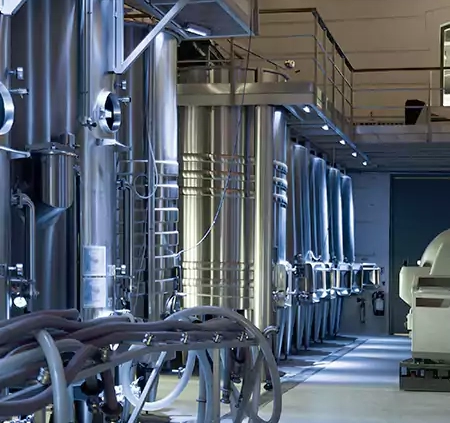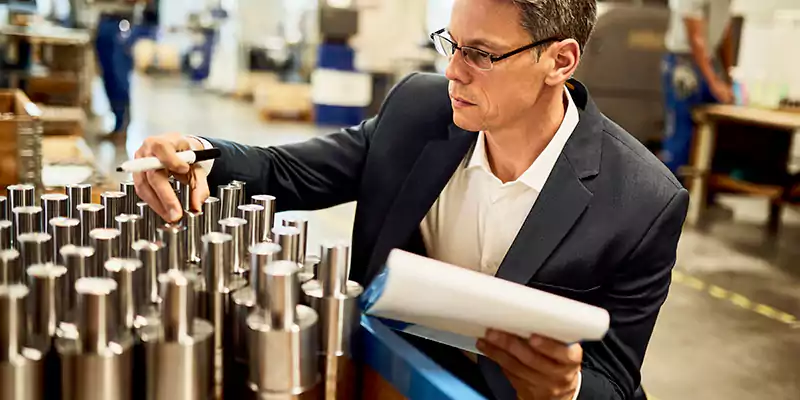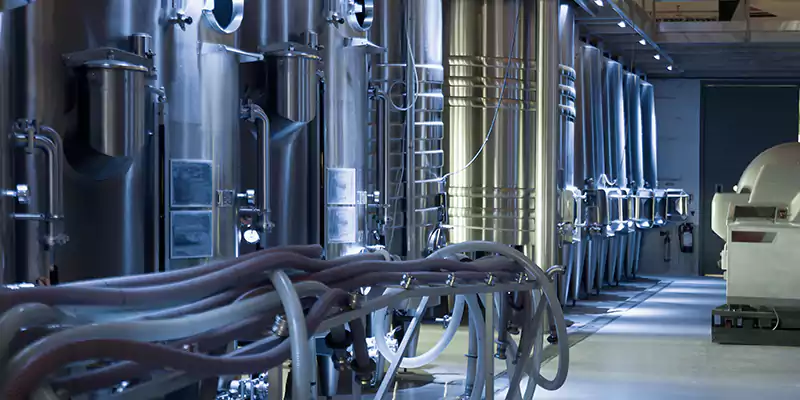3 Common Mistakes Made When Handling Stainless Steel
Producing components with stainless steel is a smart choice for durability and product longevity because of its natural oxide protection layer. However, warping, corrosion, or even metallurgical changes can occur if best practices are not used.
Metalworkers new to stainless, or even experienced welders and fabricators in a hurry, need to pay close attention to proper stainless steel handling techniques and procedures to maintain the integrity of the metal and keep the final product in-spec.
Find out why introducing surface contaminants is one of the riskiest blunders in handling stainless steel and how to avoid this and other mistakes during stainless steel fabrication.
1. Metallurgical Changes
How it happens:
• The Heat Affected Zone (HAZ) during the welding or thermal cutting process is larger on stainless steel because of lower thermal diffusivity (4.2 mm2/s) compared to other metals
• This can lead to a change in grade (austenitic stainless steel turning martensitic, more brittle and harder) or heated metal becomes weaker
Cutting Options:
In his article on HAZ, Andrea Bustreo notes the four types of cutting and factors that should be noted in employing them during stainless steel fabrication.
• Shearing, manual cutting and waterjet cutting do not provoke a HAZ because they do not overheat the sheet metal.
• Laser cutting generates the smallest HAZ among all thermal cutting techniques because it applies heat on a very small area.
• Plasma cutting generates an intermediate HAZ because the plasma pulse is wider than a laser beam. Higher currents allow for a higher cutting speed, reducing the duration of exposure and the width of the HAZ.
• Oxyacetylene cutting generates the widest HAZ of all thermal cutting systems because of the intense heat, slow speed, and wide flames.
Weld Decay:
Intense localized heat from welding can result in the depletion of chromium in the base metal around the weld. This change in the metal makes it sensitive to corrosion. ASM International published a paper listing these options for controlling stainless steel sensitization.
• A postweld high-temperature anneal and quench to redissolve the chromium at grain boundaries, and hinder chromium carbide formation on cooling.
• A low-carbon grade of stainless steel (e.g., 304L or 316L) to avoid carbide formation.
• A stabilized grade of stainless steel containing titanium (alloy 321) or niobium (alloy 327), which preferentially form carbides and leave chromium in solution.
• A high-chromium alloy (e.g., alloy 310)
2. Distortion
How it happens:
Stainless steel’s low thermal conductivity and high expansion rate make it an easy target for distortion during welding
Welding Tips:
• Use lowest amperage possible without jeopardizing the weld quality
• Control interpass temperatures
• Use controlled tack welding, clamping jigs, or a copper backing plate
3. Introducing Surface Contaminants
How it happens:
• Iron filings and other environmental contaminants come in contact with stainless steel
• Grease on hands, chalk, and other items introduced during handling can contaminate the surface
• Both of these can lead to localized corrosion
Avoiding Surface contamination:
• Use an abrasive designed for stainless steel grinding, blending, and deburring
• Keep stainless steel abrasive products separate from other abrasives used on different metals. Never use an abrasive product that has been used on a different type of metal
• Store stainless steel separately from carbon steel and other metals
• Keep stainless steel in packaging and protected from the elements as long as possible
• Remove adhesives used in transport from the stainless steel: these can harden and cause crevice corrosion on the site
Proper welding and cutting techniques, awareness of the HAZ, and adherence to good quality control and anti-contamination measures will give you an in-spec, well-finished stainless steel product. Make sure that you and your team read this article to keep common stainless steel fabrication mistakes at bay.
To learn more about stainless steel fabrication, download your copy of A Metalworker’s Guide to Stainless Steel.
How To Protect Stainless Steel From Rust And Corrosion
#1 You might be knowing that water or moisture content in the air is the enemy of stainless objects when it comes to rusting or corrosion. This is because the oxygen present in the water or moisture will combine with the iron present in the stainless steel and reacts with it to form iron oxide. Thus, you can see that the substances that have iron content in it can easily form iron oxide. To protect the stainless steel substances, you must always keep them dry and away from moisturized air. You can even install a dehumidifier to keep the air dry and remove moisture from the air. Keeping the objects clean will help the substances to be away from the dirt and mud that usually comes with moisture in it.
#2 You Must Not Let The Stainless Steel Develop Any Sort Of Scratches:
When the stainless steel develops scratch on the surface or any sort of crack (even minor), it will expose the underlying metal to moisture content and hold water. Due to the scratches and the cracks, the iron present in the stainless steel comes in contact with moisture or water and starts rusting. Usually, the manufacturing industries are making use of cold-rolled steel because it does not trap water or moisture and keeps the metallic surfaces durable.
#3 You Can Passivate The Stainless Steel To Protect It From Rust And Corrosion:
This is another important way in which you can protect stainless steel from rust and corrosion. Passivating the stainless steel material is performed by altering the metal’s surface with an extremely thin layer of chromium. The technicians choose chromium because it has high resistance to moisture, and thus it becomes the ideal choice when it comes to protecting metallic surfaces from rust or corrosion. When you regularly passivate the stainless steel, it will help in keeping the material as it is for a long period without it developing rust or corrosion.
#4 Powder Coating The Stainless Steel Products:
You Must Keep The Stainless Steel Material Clean and Dry:
Although stainless steel is highly resistant to corrosion, it is not entirely corrosion proof. A good way to safeguard stainless steel objects, which are exposed to the exterior elements, is by the method of powder coating. In this method, a fine layer of dry powder is applied to the surface electrostatically. This is followed by setting this paint layer with heat. This method provides both color and rust protection to the stainless steel objects.
#5 You Must Regularly Maintain Stainless Steel:
When you are regularly keeping the stainless steel objects or materials properly maintained, there are fewer chances that it will develop rust or corrosion. You need to ensure that whenever the metallic surfaces are getting damaged or developing cracks; you fix them as soon as possible.
Summary:
Although stainless steel is an alloy when it continuously comes into contact with moisture or water, it will definitely be prone to developing rust and corrosion. You can follow the aforementioned ways to keep the stainless steel protected from rust and corrosion for a long period, and you will not have to compromise with the quality of the stainless steel. If you are successful in keeping the stainless steel protected from rust and corrosion, you will never have to worry about the quality of the object.







